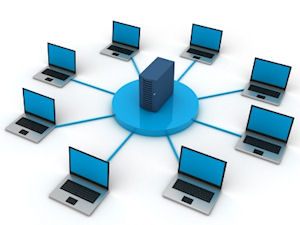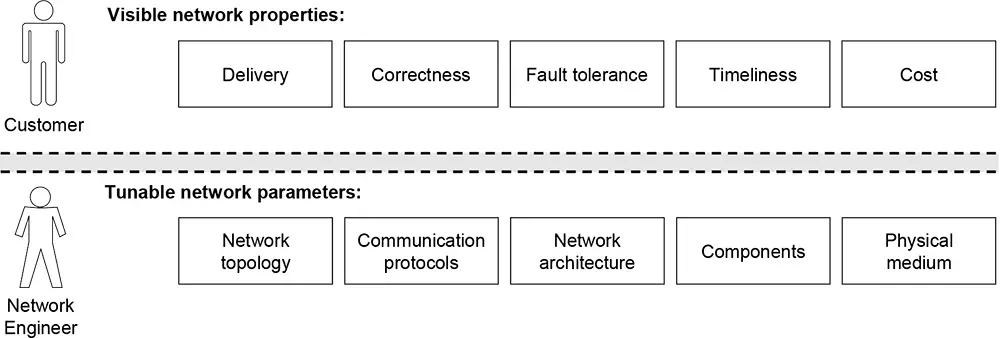| Lesson 2 | Networking |
| Objective | Describe the overall importance of networking to eBusiness. |
How is networking used in e-business?
Networking plays an integral role in the operations of e-business, enabling rapid communication, data exchange, and streamlined business processes. Here's a comprehensive breakdown of how networking is utilized in e-business:
In essence, networking underpins the functioning of e-business, enabling it to operate beyond geographical boundaries, offer services round-the-clock, and adapt quickly to changing market dynamics. Without networking, the global reach, scalability, and versatility offered by e-business would not be possible.
- Website Hosting and Access: The most fundamental function of networking in e-business is providing a pathway for customers to access an online store or business website. Websites are hosted on servers, which are accessed via the network, which is usually the internet.
- Data Exchange: Networking facilitates swift and secure exchange of data. From browsing products to placing orders, tracking shipments, and processing payments, every transaction in e-business involves data being transferred over a network.
- Customer Communications: e-businesses rely heavily on networking for communication with customers. Email marketing campaigns, newsletter distributions, transaction confirmations, and customer support interactions all require networking capabilities.
- Use of Cloud Services: e-businesses often leverage cloud-based solutions for storage, processing, analytics, customer relationship management (CRM), and more. Access to these services is granted through networks, enabling businesses to harness vast computational resources without the need for substantial on-site hardware.
- Remote Collaboration: With remote work becoming increasingly common, networks allow employees and teams to collaborate effectively from diverse locations. Through networking, team members can access necessary files, participate in virtual meetings, and work jointly on projects.
- Digital Marketing and Social Media: Networking enables e-businesses to reach and engage customers via digital marketing channels, including social media platforms, online advertising networks, and search engines.
- Integration with Suppliers and Partners: Networking allows e-businesses to integrate their systems with those of their suppliers, logistics partners, and payment processors. This connectivity streamlines operations, from procurement and inventory management to order fulfillment and returns.
- Security: Secure networks are vital to protect sensitive business data and customer information. Networking technologies and protocols are used to enforce data encryption, user authentication, and intrusion prevention.
- Analytics and Business Intelligence: By leveraging networking, e-businesses can aggregate data from various sources, analyze it, and generate actionable insights to improve their operations, customer service, marketing efforts, and more.
In essence, networking underpins the functioning of e-business, enabling it to operate beyond geographical boundaries, offer services round-the-clock, and adapt quickly to changing market dynamics. Without networking, the global reach, scalability, and versatility offered by e-business would not be possible.
Networking allows Computers to communicate
You can think of networking as the set of baseline technologies that enable computers to communicate and share information. Together, these technologies create and connect the different and disparate networks that may be part of your solution. Networking is like a set of pipes. As pipes convey water from home to home, so networking conveys information from computer to computer.
Computer networking involves connecting computers in the same building or office so users can readily communicate with other computers or devices. Switches connect multiple devices in one building on the same network. Computers, for instance, can connect to printers, fax machines, scanners and servers through a switch. Routers tie multiple networks together, such as when a computer connects to an internet router to access the web. Routers control the information going to and from computer networks through security software and programs.
Computer networking involves connecting computers in the same building or office so users can readily communicate with other computers or devices. Switches connect multiple devices in one building on the same network. Computers, for instance, can connect to printers, fax machines, scanners and servers through a switch. Routers tie multiple networks together, such as when a computer connects to an internet router to access the web. Routers control the information going to and from computer networks through security software and programs.
A network is a set of devices (often referred to as nodes) connected by communication links that are built using different physical media. A node can be a computer, telephone, or any other device capable of sending and receiving messages. The communication medium is the physical path by which message travels from sender to receiver. Example media include fiber-optic cable, copper wire, or air carrying radio waves.
Networking is about transmitting messages from senders to receivers over a communication channel. Key issues we encounter include:
- Noise corrupts the messages; we would like to be able to communicate reliably in the presence of noise
- Establishing and maintaining physical communication lines is costly; we would like to be able to connect arbitrary senders and receivers while keeping the economic cost of network resources to a minimum
- Time is always an issue in information systems as is generally in life; we would like to be able to provide expedited delivery particularly for messages that have short deadlines


Figure 3-2 illustrates what the customer usually cares about and what the network engineer can do about it.
Visible Network Variables
The visible network variables, easily understood by a non-technical person include:
- Delivery: The network must deliver data to the correct destination(s). Data must be received only by the intended recipients and not by others.
- Correctness: Data must be delivered accurately, because distorted data is generally unusable.
- Timeliness: Data must be delivered before they need to be put to use; else, they would be useless. Fault tolerance and cost effectiveness are important characteristics of networks. For some of these parameters, the acceptable value is a matter of degree, judged subjectively. Our focus will be on network performance (objectively measurable characteristics) and quality of service (psychological determinants).
- Limited resources can become overbooked, resulting in message loss. A network should be able to deliver messages even if some links experience outages.
- The tunable parameters for a network include: network topology, communication protocols, architecture, components, and the physical medium (connection lines) over which the signal is transmitted.
Networking and Internet protocol
The e-business solutions being built today are Web-based, which itself is Internet-based. Therefore, the most important networking elements for e-business involve the hardware, protocols, and software that go into Internet protocol (IP) based networks. What are protocols and why are they important? A protocol is a set of rules and conventions that determines how computers exchange information over a network. Protocols are important within the context of e-business because most solutions are delivered through networks using Internet protocols. Other networks (usually from pre-Web-era solutions) may well be involved in your e-business solution. They can be made to work with other IP-based networks through gateways and other networking interfaces. The next lesson is about one technology used for connecting computers, LANs and WANs.